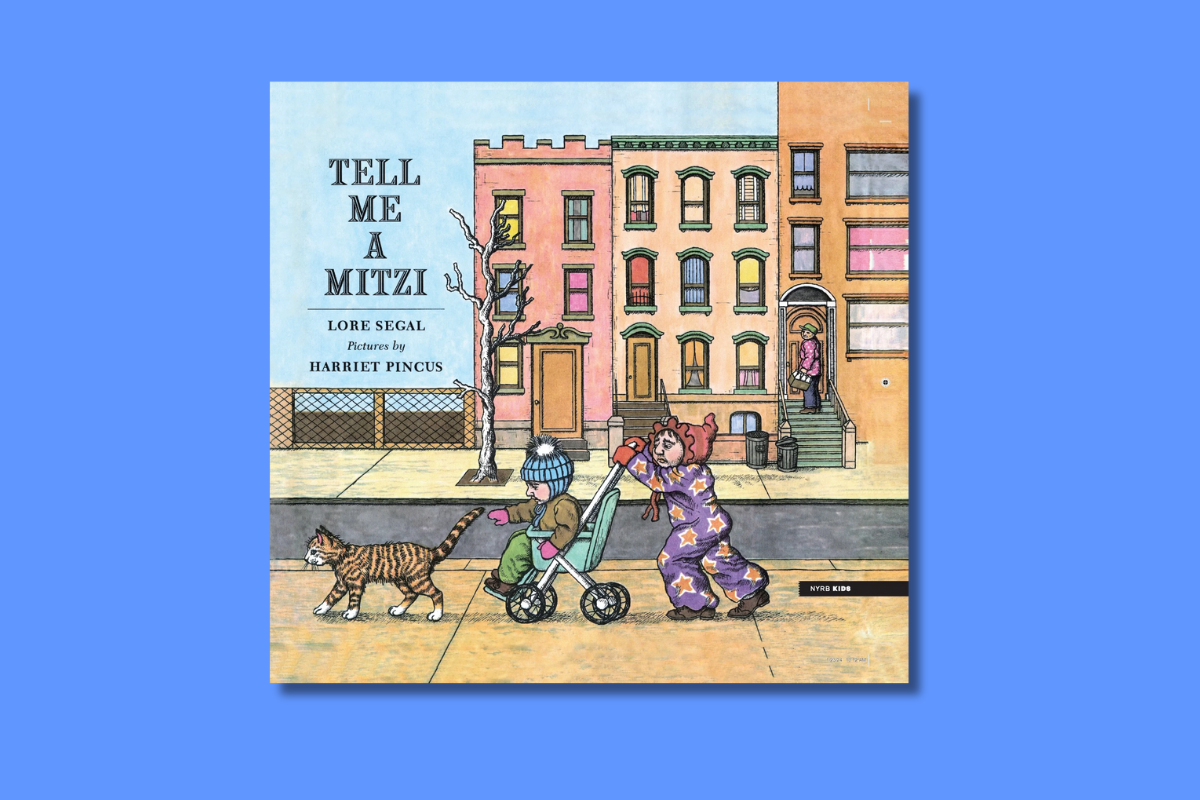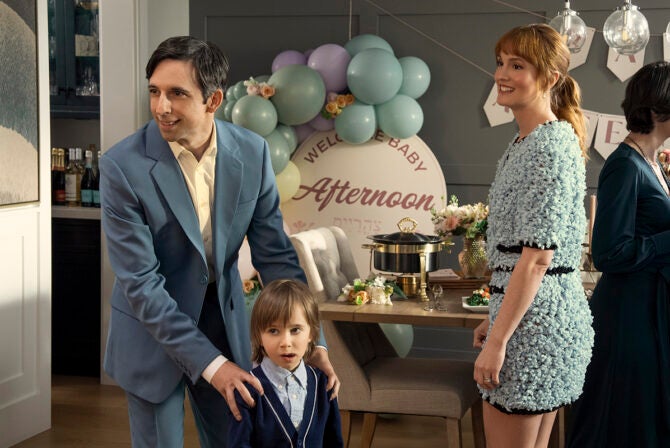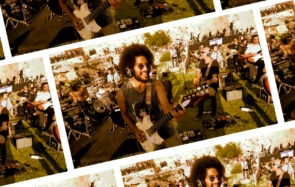In 1970, the picture book “Tell Me a Mitzi” was published, with text by Lore Segal and illustrations by Harriet Pincus. Segal’s voice — warm and funny, but never cloying — meshes with Pincus’s droll, engaging drawings to tell us about Mitzi and Jacob, young children living in New York City. The pairing of the author and illustrator was suggested by Maurice Sendak, who knew both women, and the combination makes this book a cherished one. It tells three tales: in which the children attempt to take a cab on their own to their grandparents; come down with colds; and view a parade that goes differently than planned.
“Tell Me a Mitzi” was Segal’s first of eight picture books. These books are wry, whimsical departures from her award-winning novels and short stories for adults — several of which call upon her personal history as a Holocaust refugee to the States, by way of England. Though Segal has been publishing stories in the “New Yorker” since the 1950s and was nominated for a Pulitzer Prize (for 2008’s “Shakespeare’s Kitchen”), her picture books should never be overlooked as a deservedly cherished part of her canon.
My family somehow missed “Mitzi” when I was a child, but I embraced the book as a college student in the ‘80s. At school, I befriended a classmate named Jacob Segal — who happened to be Lore’s son — and subsequently discovered her work. Not so coincidentally, Jacob is also the name of Mitzi’s baby brother.
Though “Tell Me a Mitzi” went out of print for some time, the great news is that it’s back: The volume was reissued by the New York Review of Books Kids imprint a little over a month ago. This is great news for the many Jewish parents who read it to their children, and for the Jewish “kids,” now grown, who had it read to them. Speaking to some of those folks now, I wondered what had most drawn them to the book — and why, even though “Mitzi” mentions nothing about religion, it seems unmistakably Jewish. (The imprint acknowledges this, stating, “This beloved, colorful picture book contains three stories about a little girl with some serious chutzpah.”)
Novelist Tova Mirvis, 52, recalls that her mother read “Tell Me a Mitzi” to her. “All these years later,” she says, “I remember the book so well. I was drawn to the portrayal of a little girl out on her own, adventuring around New York City. It was so different from Memphis, where I grew up, where we were carpooled everywhere. The phrase ‘Tell me a Mitzi’ became a refrain among the kids in my family if we wanted to hear a story.”
Years later, Segal was one of Mirvis’s writing teachers at Columbia. “I don’t think I had any sense as a child of who the ‘Mitzi’ author was,” Mirvis recalls. “It was thrilling to learn from this writer, someone we still quoted in my family, and to read her other work.”
“I really, really loved that book,” recalls Rabbi Rebecca Einstein Schorr, 53, who read “Mitzi” as a girl. “I’m from California, but my grandparents, of blessed memory, were from Brooklyn. I remember the feeling, as a child, of wanting to get in a taxi too, to go to my own grandparents. I don’t recall anyone saying the characters were Jewish, but they were Jewish to me. The language, the illustrations, they seemed coded that way.” Coming out of a highly challenging week in her adult life, Einstein Schorr has an idea during our chat. “I’m going to revisit Mitzi and her little brother, Jacob,” she says. “I think the warm nostalgia of it will envelop me — like a cozy blanket.”
“Tell Me a Mitzi” carried the feel of a Jewish community to places that did not have it. “When I was a kid, I lived on the side of town with very few Jews,” explains middle-grade author and first-grade teacher Stacy Mozer, 50, “and my family was very secular. In elementary school, many of the projects and activities centered around Christian holidays. ‘Tell Me a Mitzi’ was one of my favorite books because even though the author never identifies the characters as Jewish — which I’m realizing only now — something about the stories, and the names Mitzi and Jacob, resonated with me.”
That’s true for me as well. The stories are based in realism but then freely depart from it (in one, Jacob calls for a President’s motorcade to turn around and pass by him again — and it does); and this structure calls to my mind my Jewish-immigrant grandpa who made up tales to tell his nine grandkids. He would begin, “Once upon a time in the land of cotton, where olden times are not forgotten, and the tomatoes and the potatoes grow ripe and rotten: To make a long story longer and more monotonous…” before launching into fantastical yarns.
And Segal’s wry turns of phrase do feel Jewish. I laughed just today when reading a relatable passage from the book’s second story, “Mitzi Sneezes.” The two children and their mother have colds. Then their father arrives home.
“I’ve got a terrible cold,” he said.
“I’ve got a cold too,” said Mitzi’s mother.
“I said it first,” said Mitzi’s father.
“I’ve got it worst,” said Mitzi’s mother.
It’s the rhyme, right? That funny rhyme — it’s so Jewish.
S.J. Schwaidelson, 72, a blogger and novelist, read “Tell Me a Mitzi” to other people’s children, and then to her own. “I first encountered ‘Mitzi’ when I was babysitting for a friend, back while I was in college,” she says. “I loved reading the book to her girls. Then I had boys! We live in Minnesota, but I’m a New Yorker, and we spent every August on Long Island. I would take my boys on [Mitzi-like] adventures in the city. They loved that book.” Like Mirvis and her siblings, Schwaidelson’s boys began to ask for “a Mitzi” when they wanted a story told.
Asked if the book “seems Jewish” to her, Schwaidelson responds, “Very much so. The language — and the relationships between the parents and the kids.” (Indeed. Mitzi and Jacob’s parents end up doting when they mean to discipline, and occasionally vice versa.) It was also a way to connect her St. Paul–based offspring to her childhood: “The stories reflected a reality I grew up with. Sharing them was a link to my past.”
Texting my Cousin Amy to fact-check our grandfather’s story intro, I thought about how “Tell Me a Mitzi” taps into so many treasured childhood memories. And at 54 years old, it’s now new again — ready to charm the next generation.








